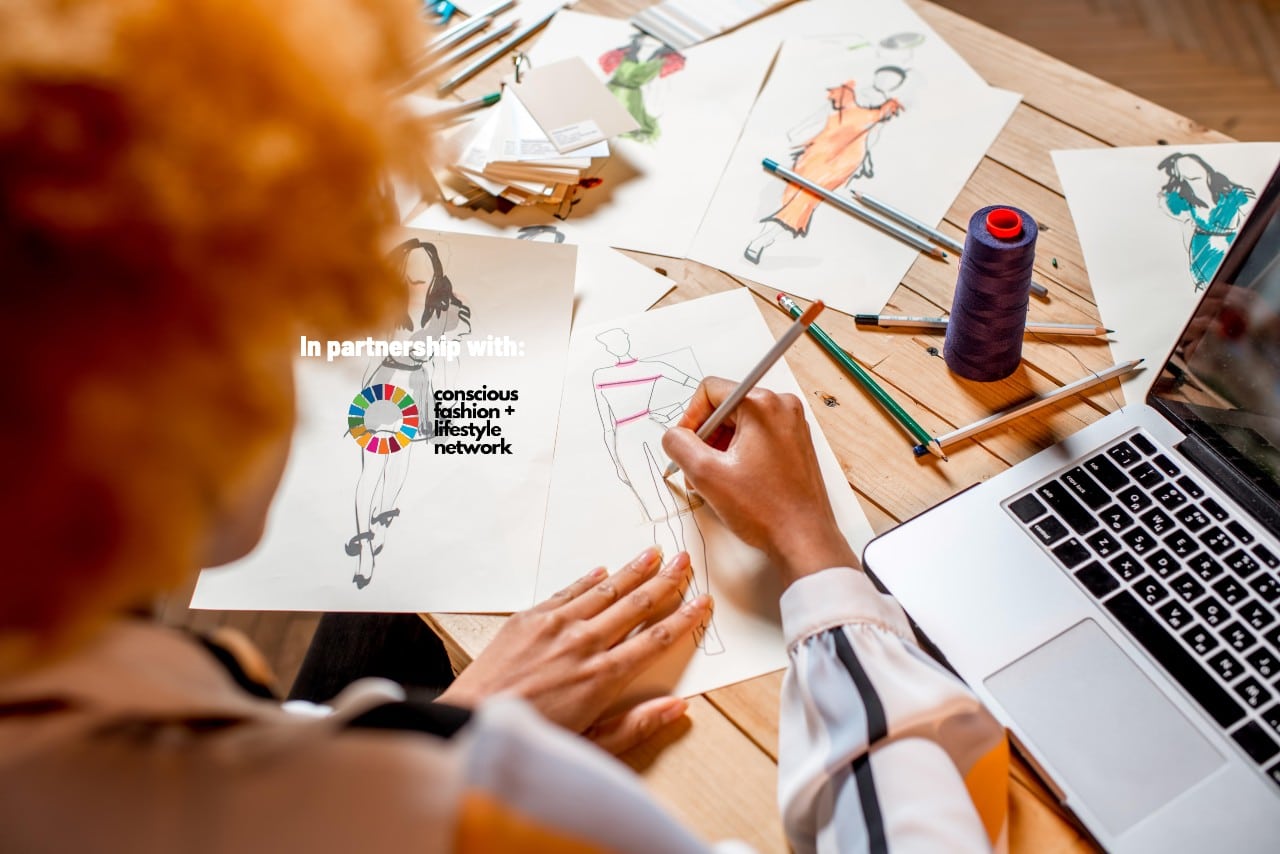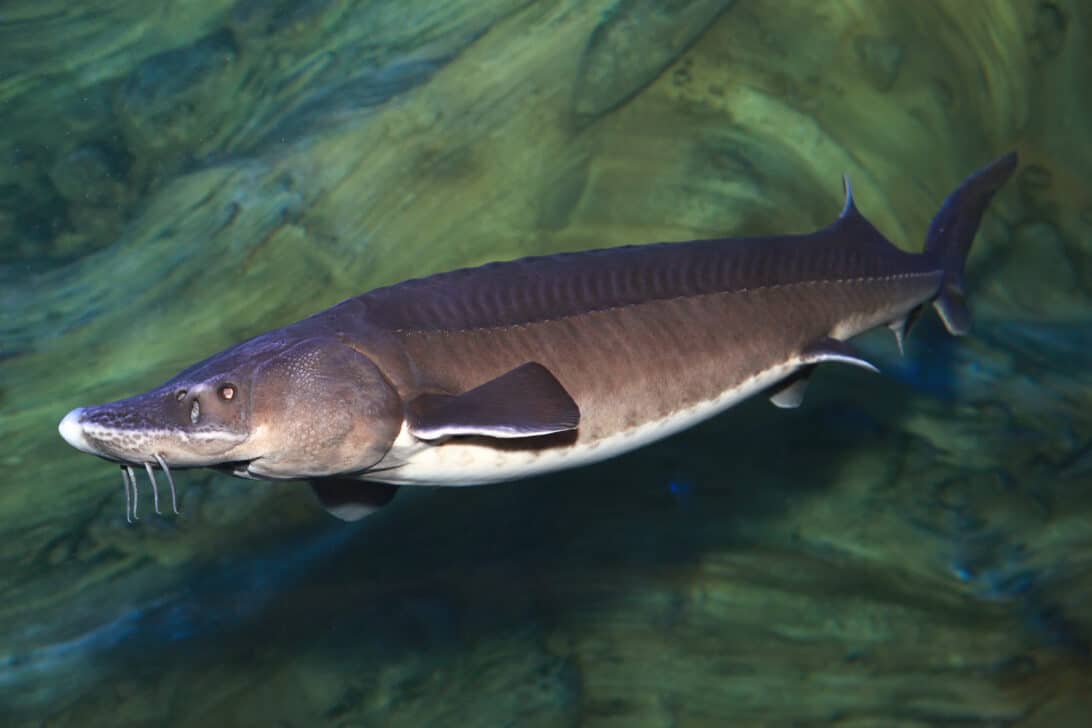How is sustainability being carried through into the fashion design process?
In partnership with Conscious Fashion + Lifestyle Network
By the time you actually wear your new floaty boho dress or the latest streamlined pair of ergonomically-designed running shoes, the negative impact of your fashion choice may already have been made.
In the case of cotton, which is the source material for half of all textiles in the world, that harm often includes soil erosion, toxic waste being dumped into water supplies and the destruction of fragile ecosystems such as the Aral Sea in Central Asia, the Indus Delta in Pakistan and the Murray Darling River in Australia.
Transform waste into treasure
Every year, there are over 80 billion garments produced worldwide and that’s set to grow. An average person buys 60 per cent more items of clothing every year and keeps them for about half as long as 15 years ago, generating a huge amount of waste, according to a report from the CBI.
Encouraged by a new generation of eco-aware consumers, many designers are building in sustainability from the design stage onwards to ensure that the negative impacts of their industry are lessened, or even removed altogether. These designers include Bethany Williams, a sustainable men’s wear designer whose business is to ‘transform waste into treasure’ by using materials including book waste and reclaimed fabrics. This year, Williams was a finalist for the International Woolmark Prize and announced as the recipient of the BFC Vogue Fashion Fund 2021.

Vollebak uses pigment made from black algae, which absorb carbon dioxide through photosynthesis while producing oxygen.
Other designers who are making sustainability the crux of their collections include Phoebe English, whose show, Nothing New, was made from unused fabrics bought from or donated by designer brands in London, and the dyes were locally sourced. “We worked with local cafés, asking them to save avocado stones for us. That’s the terracotta colour in the collection. The kind of black and blue-black is from acorns. There are oaks in Greenwich Park, so we all picked them up every day, walking to work,” she told Vogue in September 2020.
“Fashion is fundamentally changing, and fashion designers are becoming less affiliated with the conventional fashion industry than ever before,” says Professor Dilys Williams of the Centre for Sustainable Fashion at the London College of Fashion in London. “The conventions of fashion appear less and less relevant in a world disrupted by climate, social and personal change. The convergence of communication, production, energy and transport technologies is also fundamentally changing what we make and wear and how we live.”
“For over a decade now, we have been witnessing how this new breed of designers flex their creative muscles. We are privileged to have spent valuable time with over forty of them in the collating of evidence of sustainability in action. These fashion designers have shared a purpose: recognising possibilities for fashion to contribute to society, culture, nature and financial economies.”
In some cases, fashion items are even being produced to create positive benefits to the environment and their wearer, such as Vollebak’s Algae black shirt, a futuristic must-have which uses black ink made from algae. Algae is actually good for the environment because it absorbs carbon dioxide through photosynthesis while producing oxygen.
Based in the UK, Vollebak partnered with a U.S. biomaterials company called Living Ink to create the pigment and the shirt retails for around £100.
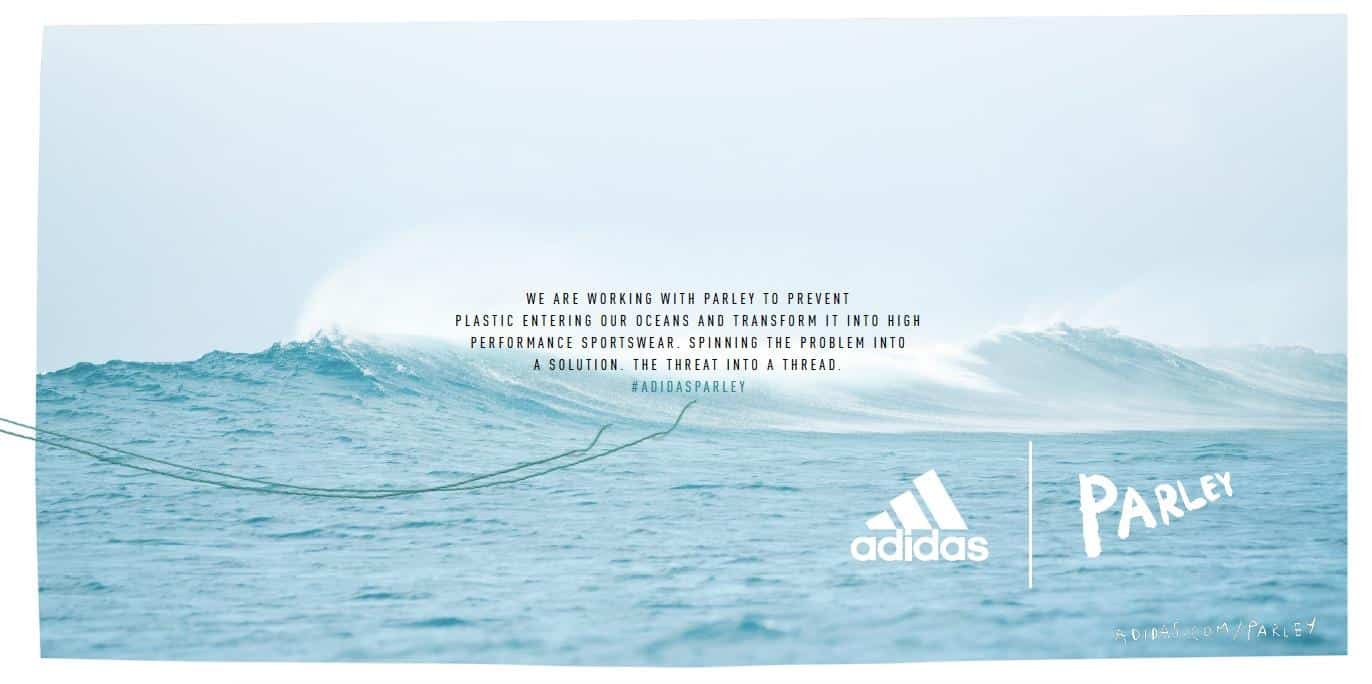
Adidas creates products from plastic collected by Parley and its global clean-up network.
Some brands have gone even further and made recycling into their whole business model. For Days is a US start-up with a closed-loop fashion system, which is endlessly recycling materials. A 100 per cent organic T-shirt, tank top or sweatshirt from For Days costs $38 and comes with a lifetime membership. If it ever needs to be replaced, it costs around eight US dollars. The returned items are recycled.
For larger retailers, outsourcing their recycling initiatives can be the way forward and there are companies that specialise in this. For example, I:CO is a Swiss solution provider with recycling expertise in delivering innovative recycling opportunities partnered with H&M to support its “Bring It” Fashion Collection Campaign in 2017. They organise the transport, sorting, and recycling of donated textiles, providing the infrastructure for raw materials to go into a closed loop manufacturing cycle.
Designers are turning preloved garments into reloved items through upcycling
Sportswear designers, who have a massive share of the fashion market, are increasingly using materials made from agricultural waste products and dredged plastic waste from waterways and oceans. Adidas created their Ultraboost Parley shoes from 95 per cent dredged waste plastic and other brands use materials derived from agricultural waste products including Orange Fiber, a silk-like material made from cellulose extracted from the rinds of oranges.
Ananas Anam, based in the UK, sells its own proprietary leather-like textile made from pineapple leaves called Pinatex. According to their 2020 report, the company’s unique material has been used by fashion brands in over 80 countries.
“At Ananas Anam, we aim at meeting the challenges of our times by developing innovative products in which commercial success is integrated with, and promotes, social, ecological and cultural development. By connecting on a deep level with the people we work with, we build ecosystems that are bound together, symbiotically grow together in order to bring about positive changes into the world”, said Dr Carmen Hilosa Founder and Chief Creative & Innovation Officer at Ananas Anam.
Ananas Anam creates a leather-like material from pineapples.
Cutting edge technology is also being mandated in design briefs. 3D printing is being used to make insoles for sports shoes in order to reduce emissions during the manufacturing process – and improve labour conditions for workers. A study carried out by MIT in the US found that a typical pair of running shoes generates approximately 13.6 kilograms of CO2 emissions but more than two-thirds of a running shoe’s carbon impact can come from manufacturing processes, with a smaller percentage arising from acquiring or extracting raw materials.
Better sizing methods for online shoppers means less waste because fewer people return clothes because they simply don’t fit. Around 10 per cent of online returns are donated or incinerated. Fast fashion companies like Zara and H&M are also investing in better fit analysis, with both now relying on software that suggests sizes for online customers after they input their height and weight. Other companies are getting personal with their online shoppers. In 2017, the British lingerie retailer Figleaves included an option for online shoppers to speak to a fitting assistant via Skype before making a purchase.
And designers are turning preloved garments into reloved items through upcycling.
Fashion designer Benjamin Benmoyal finds inspiration in things that other people throw away. After graduating from Central Saint Martins in 2019, he made his Paris Fashion Week debut in 2020, showing an eponymous collection made from custom-made fabrics derived from discarded cassette tape and unwanted luxury garments.
Speaking to fashion portal I-D in April 2021, he explained how he sourced his materials. “All the garments that are not made with our signature cassette tape fabric are made with deadstock from LVMH Maisons. They have thousands of unused and unwanted luxury fabrics, and we buy them for much cheaper than they would otherwise be. It’s a win-win!”
More Sustainable Fashion

Unilever Uses Unwanted Flowers for Fragrance
Unwanted flowers used by Unilever for fragrance. Collaboration with researchers and suppliers creates sustainable, cost-effective ingredients.

Mead’s Modern Revival: Summer’s Trendiest Drink
Mead is being reinvented with new fermentation techniques and unique flavors, making it a trendy choice for modern drinkers this summer.
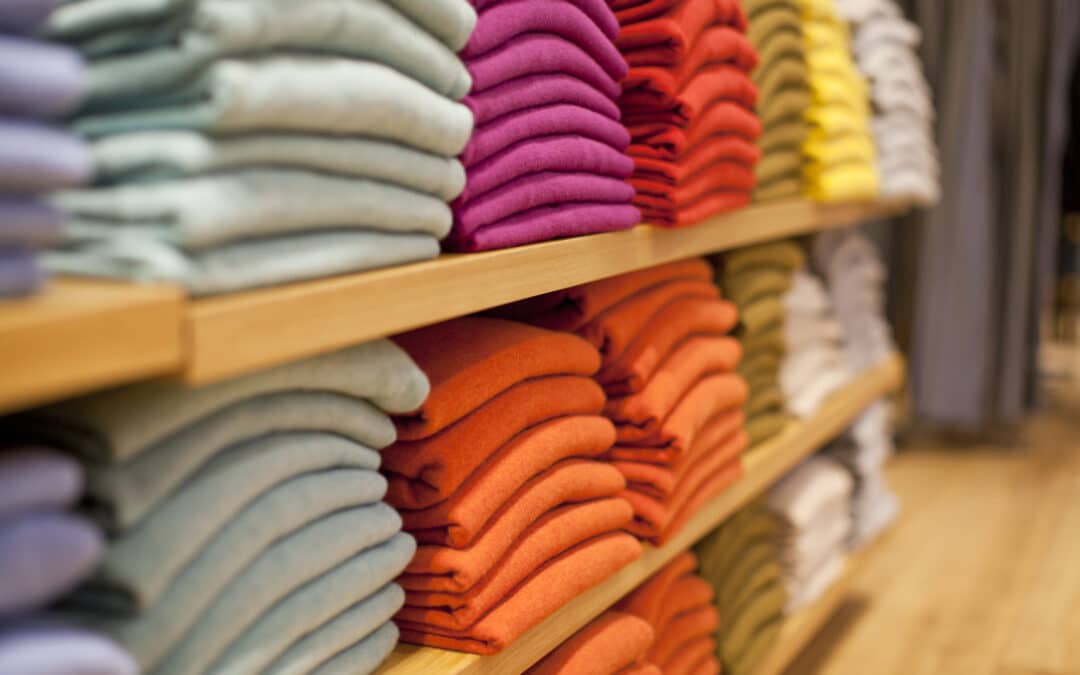
Transparency Becoming Fashionable, Slowly
The largest companies in the fashion business are getting (a bit) better at disclosing information about their human rights and environmental policies, practices and impacts a new study has found. But they’re still in F-grade territory with an average performance...
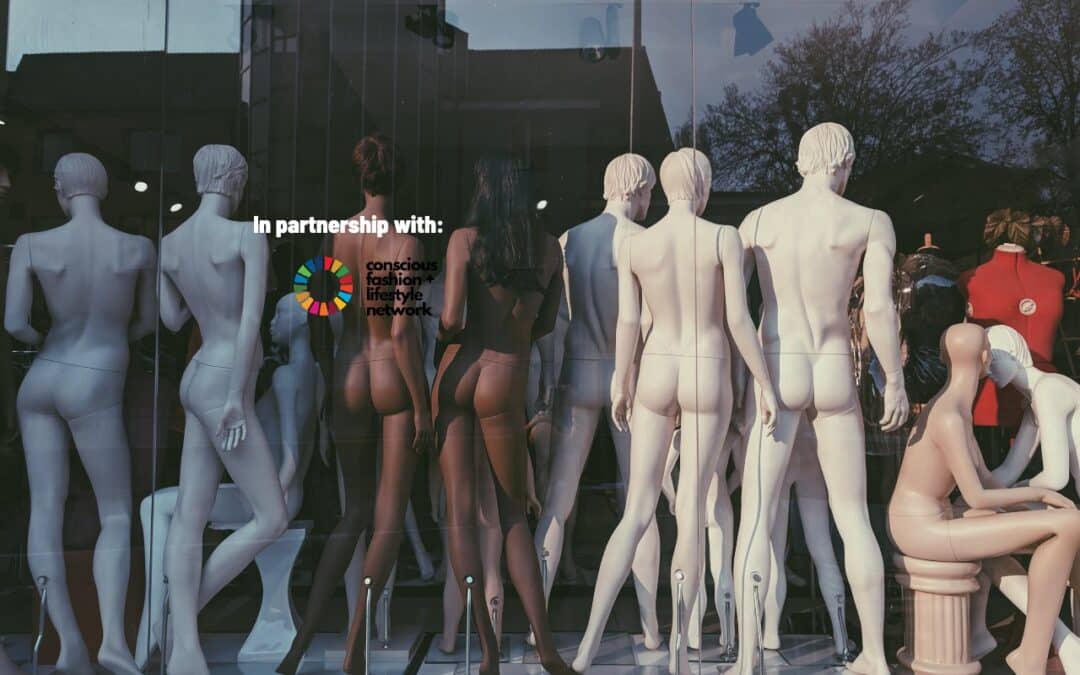
The New Fashion Consumer
How are people’s fashion behaviours and preferences changing? In partnership with Conscious Fashion + Lifestyle NetworkGreta Thunberg, the Swedish activist and campaigner, was recently chosen to be the first ever cover girl for newly launched Vogue Scandinavia which...
Professor Dilys Williams says the Fostering Sustainable Practices project, led by her team at the Centre for Sustainable Fashion, in partnership with The Open University and Middlesex University’s Centre for Enterprise and Economic Development Research, has an important role in highlighting what sustainability in action looks like on the ground, to elevate and promote best practice in how fashion can make a positive social and cultural contribution, within nature’s limits. “We seek to recognise, amplify, support and learn from these designers, who interpret the words ‘fashion’, ‘design’ and ‘entrepreneurship’ in the context of our times, quite differently from the ways in which these words have been perceived, separately and together.”
Subscribe
Sign-up to receive our newsletter
